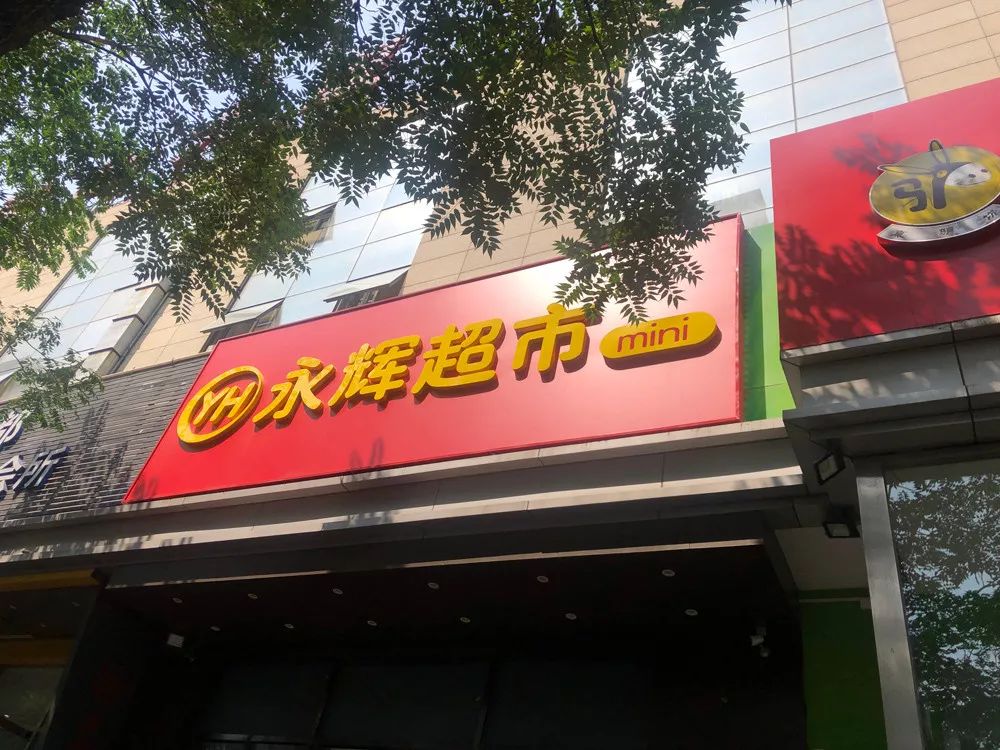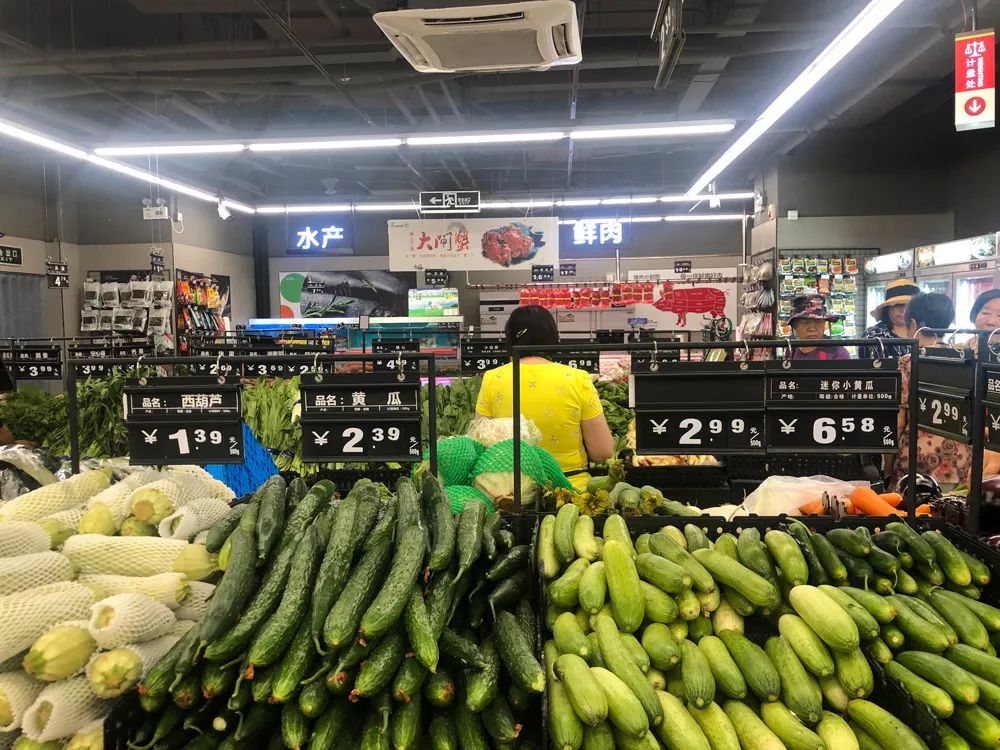Author/灵兽十里 ID/lingshouke This is the 686 original article of the Spirit Beast at 10 am, located in the Yonghui Mini Community Store next to the South Third Ring Road, Fengtai District, Beijing. The cashier is sometimes big…
Editor Press: This article comes from WeChat public account “Soul Beast” (ID: lingshouke), author ten miles .
The store is not as simple as the “short-sized” hypermarket. The selection, location, and differentiation logic of the target consumers are all in front of the players.
At 10:00 am, in the Yonghui Mini Community Store next to South Third Ring Road, Fengtai District, Beijing, the cashier sometimes loudly confirmed the price to the tally, and asked the consumer if they needed to redeem the product. In the fresh area, several groups of middle-aged and old customers, picking and picking up bulk vegetables and fruits, while cooking the eggplant and beans that they bought yesterday, tasted good.
In stark contrast to Yonghui Mini’s “market atmosphere”, a small supermarket 10 meters away and a full-time convenience store 20 meters away are very deserted.
After a new round of retail campaigns, players are even more enlightened that the retail industry should move closer to consumers, turning to a 1km community business.
After being targeted by pre-positions and community group purchases, due to high The cost of cold chain logistics and the cost of obtaining customers have made the community fresh market appear like a corpse, until the emergence of a small business that looks like a higher level of efficiency, giving retailers a new attitude to enter the community.
Some retail companies have a halo of “standard super” and try to renew their success in the community.
But the store is not as simple as the “short-sized” hypermarket. The selection, location, and differentiation logic of the target consumers are all in front of the players.child. Before the horse races on the ground, the card position war is inevitable.
1
A silent contest is taking place between retailers.
“Quick, must be fast, rent the store first and quickly decorate it, all VI systems follow the big store,” the head of a small business of a retail company told “The Beast”, seeing the Mini After the store opened, the interior was very anxious.
From the financial report released by Yonghui in the first quarter of 2019, 93 new Mini stores were opened in the first quarter, with 146 contracts signed, totaling 239. The target of Yonghui Mini Store this year is thousands. Although the box horse Mini only opened two, but not to be outdone, Hou Yi publicly said that the box store of the Mini Mini is more than Box Ma Dadian, to achieve a small step away this year.
It sounds like this is another crazy move in the new retail sector after the “Super”.
In fact, this is not the first time retailers are targeting community businesses.
As early as 2015, Yonghui carried out the layout of the life-saving convenience store Yonghui life, but the development was not smooth. In just three years, the net loss was nearly 1 billion yuan, and finally had to go from Yonghui Supermarket. The divestiture, but this does not prevent Yonghui from continuing to invest in small business.
“The Beast” discovered through the field visit to the Yonghui Mini store that it is obviously different from the divorced Yonghui life in the community business. The Mini store has a strong and never-ending position in terms of positioning people and product structure. Hui gene.
The Yonghui Mini Fangzhuang store with an area of about 500 square meters is mainly composed of vegetables, fruits, aquatic products, meat and other fresh produce, accounting for 60% of the total. All fresh products are mainly in bulk, and Yonghui Mini has lower prices while reducing packaging costs.
A staff member in the store told “The Beast” that Yonghui Mini’s clerk’s logistics support was handled by Yonghui Supermarket. At the same time, the clerk revealed that the daily average turnover of Yonghui Mini store is expected to be 50,000 yuan, which has not yet been reached.
In addition to the retail companies such as Yonghui and Box Horse, the small-scale business is also the “Hui Mi Fresh” opened by BBK, the “Tesco Express” opened by China Resources Vanguard, and the “Easy Carrefour” opened by Carrefour. There is also a group of players in the traditional retail industry who have been exploring the small business for many years.
After telling the story of “big store”, many retail companies have insight into the deeper demands of consumers, opening up unprecedented speeds in the Chinese market, and even the survival of big stores has been eroded by small business.
2
The strategy of the Mini stores is that they are independent of the big stores in the community, forming a coordination and supplement with them, reducing costs by improving efficiency, and strengthening the coverage density of the cities that have settled in a lighter and more compact manner. Business, positive competition with pre-positions.
In the past two years, companies that have tasted new species have swarmed, and hypermarkets have gradually shrunk in first- and second-tier cities because they are not well adapted to the shift in consumer demand.
The data of the China Chain Association shows that in 2018, the top 100 companies operating mainly in large supermarkets increased sales by an average of 2.5%, and the average number of stores increased by 3.6%, which was 5.2 and 12.4 lower than the average growth rate of the top 100. percentage point.
One side is the “dead” of the hypermarket, and the other is the core shelf of the concentrated hypermarket, plus Fresh as a high-frequency category of community fresh foods, the track of changes in the retail industry, in fact, there are traces to follow.
As we all know, in the retail industry, different retail formats are presented according to the grading of the business circle, that is, the first-level business district is a city-wide business district, the second-level is a regional business district, the third-tier community business district, and the last layer. The business district is the community downstairs. Then, the vegetable market and large supermarkets can belong to the second and third-tier business districts, while the small-scale Mini community fresh food store is the fourth floor.
From the perspective of the development trend of the retail industry, it is showing a trend closer to consumers. This point can be verified from the unmanned shelves last year, and the large supermarkets not only violate the demands of consumers closer to the offline, but also do not meet the demand for timeliness of consumers in half an hour.
Comparing the 500-square-meter business area of the Mini store, the area of the hypermarket is 10 times higher, and the core location of the multiple business districts is selected. In addition, the rents are rising all the way, and the road to deep profitability in the hypermarket is getting more and more difficult.
Establishing Carrefour, which has been in business for 60 years, was only able to “sell” 80% of the shares in China’s business with a price of 4.8 billion yuan, and then officially withdrew from China.
Abandoning foreign-invested retail companies, even local large supermarkets cannot adapt to the development of the times. Data show that in 2017 and 2018, 14 supermarket listed companies closed 1,390 stores, closing two stores on average one day. In all retail formats, the performance of hypermarkets in 2018 is at the bottom.
The desperation of hypermarkets has external factors of urbanization development and changes in consumer demand, but more is caused by the drawbacks of extensive management in the past. The Mini store is spread over all corners of the city with cost control and flexibility.The contrast between traditional hypermarkets and the sluggishness of some supermarkets.
However, the Mini store can’t be simply understood as “the compression of the store area”, even in the product structure, site selection, selection, and then in the middle and back of the retail industry, quality control, etc. are all in a big way with the large supermarket model. do not.
3
“Small stores, like hypermarkets and convenience stores, are separate formats. If you want to run through it, it is more difficult to make a profit.” A practitioner who has been deeply involved in the retail industry for many years told “The Beast”.
In fact, Yonghui or box horses, after the harvest in the hypermarket, turned to the community store, the name is the big store as the core, the Mini store as a dense distribution community, but from the effect point of view The Mini store is more like a smaller version of the big store. If you completely apply the logic of the big store to the small store, I am afraid it will be difficult.
First of all, from the positioning of the community business circle, the Mini shop is defined as community consumers, personnel The small amount of liquidity requires training and maintenance of frequent flyer resources. At the same time, the important basis for measuring whether a store can be established is the situation within one kilometer of the store.
Community-type stores are usually based on family needs. All the product components are also in order to meet the daily consumption needs of the family. From the product structure, the Mini store will be more prominent and fresh, and the freshest is the most among the community residents. The category of high-frequency demand, the fresh operating capacity is the basis for determining the survival of the brand.
In the Mini store, Yonghui and Box Horse are taking a lot of bulk fresh, and the proportion of the standard is not much. The reason is that if the store only sells the standard, the result is bound to be a loss, just like Beijing Yonghui. The “standard” supermarket next door to the Mini store.
Second, it is the selection logic. How to make a selection for the Mini store is a test of the depth of the retail company’s understanding of the Mini store. The selection of the product in the Mini store is the structure of the family demand structure. How to build a store with relatively complete functions, wide category width and depth, to have deep enough insights for consumers, but also to explore and test for a long time.
Lu Jian, the general manager of Hefei Lianjia Supermarket, told The Beast that the big store pays more attention to the front desk, while the Mini store focuses on the background, and there is a huge difference in the scale and management of big stores and small stores.
The deeper understanding is that there is not much difference in the front desk of the Mini store. The business category, display method, user experience and price are similar, and the middle and back office are the key to the success of the Mini store. The scale, team, management, resources, supply chain and other comprehensive tests behind the store.




